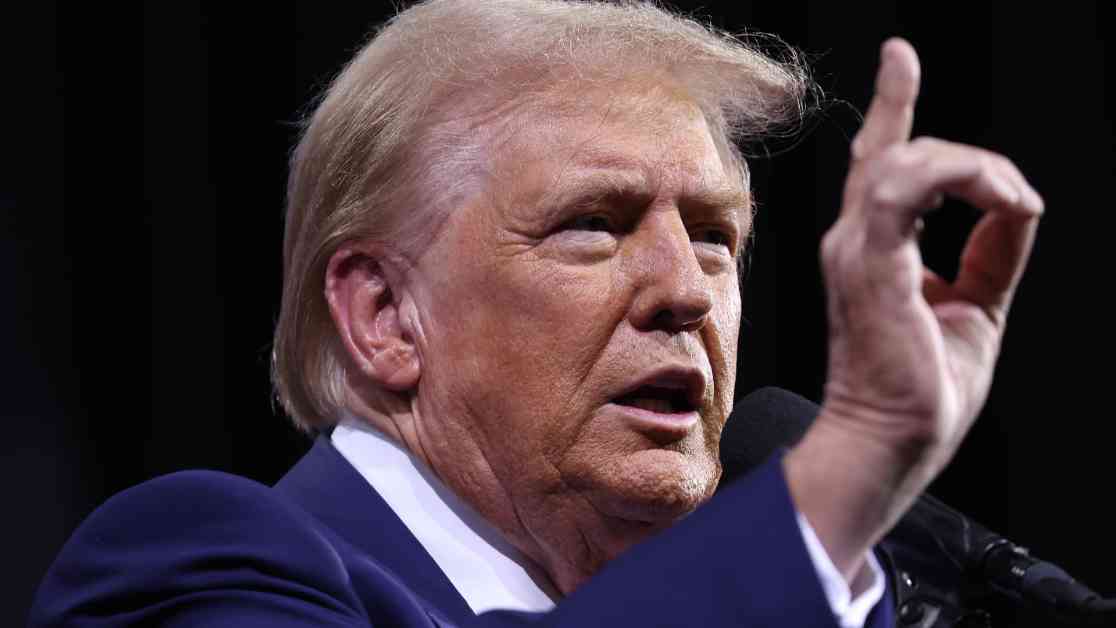Former President Donald Trump made a bold promise at his first post-debate rally in Tucson, Arizona, declaring that if he were to win a second term in office, he would eliminate taxes on overtime pay. This announcement came as part of his larger plan for additional tax cuts, aimed at providing workers with more incentives to work and giving companies an easier time in attracting and retaining employees.
In his speech at the Linda Ronstadt Music Hall on September 12, 2024, Trump emphasized the importance of rewarding hard work by ensuring that when workers put in extra hours beyond the standard 40-hour workweek, their overtime pay would be tax-free. This proposal, if implemented, would not only benefit employees by allowing them to take home more of their earnings but also provide a boost to businesses by making it more appealing for workers to put in overtime.
The Trump campaign did not provide specific details about how this plan would be executed, leaving many to wonder about the potential implications and practicalities of such a policy. Additionally, there was no immediate response from the Harris campaign regarding Trump’s pledge, indicating a stark divide between the two candidates on the issue of taxation and labor policies.
Subheadings:
Impact of Tax-Free Overtime Pay
One of the key arguments in favor of eliminating taxes on overtime pay is the potential impact it could have on both workers and businesses. By exempting overtime earnings from taxation, workers would see a direct increase in their take-home pay, providing them with a greater incentive to work additional hours. This could be particularly beneficial for lower-paid workers who rely on overtime to make ends meet or save for the future.
From a business perspective, the prospect of tax-free overtime pay could make it easier for companies to attract and retain employees, especially in industries where overtime work is common. By offering tax-free overtime, employers could potentially save on payroll costs while still incentivizing employees to put in extra hours when needed. This could lead to a more motivated workforce and increased productivity overall.
However, there are also concerns about the potential drawbacks of such a policy. Critics argue that exempting overtime pay from taxation could disproportionately benefit higher-income individuals who are more likely to work overtime, while leaving lower-paid workers with minimal gains. Additionally, there may be challenges in implementing and enforcing a tax-free overtime policy, as it could require significant changes to existing tax laws and regulations.
Historical Context and Legal Framework
The concept of overtime pay and the 40-hour workweek has a long history in the United States, dating back to the Fair Labor Standards Act of 1938. This landmark legislation established the standard 40-hour workweek, as well as overtime pay requirements for covered workers. Under the law, employees are entitled to receive at least 1.5 times their regular pay rate for hours worked beyond 40 in a week.
Over the years, various amendments and updates have been made to the Fair Labor Standards Act to address changing labor practices and economic conditions. Most recently, the Biden administration implemented a rule that raised the minimum salary threshold for overtime eligibility, ensuring that more workers are entitled to receive time-and-a-half pay for their extra hours worked. This move was praised by advocates for improving compensation for lower-paid workers and providing greater financial security for working families.
The debate over tax-free overtime pay raises questions about the intersection of labor rights, taxation, and economic policy. While the goal of incentivizing work and boosting economic growth is commendable, there are considerations about equity, fairness, and the potential unintended consequences of such a policy. As the political landscape continues to evolve, it will be crucial to weigh the pros and cons of tax-free overtime pay in the context of broader economic and social priorities.
Policy Proposals and Political Perspectives
The issue of tax-free overtime pay is just one piece of the larger debate on taxation and labor policies in the upcoming election. Both the Trump and Harris campaigns have put forth their own proposals on how to address these issues, reflecting their respective priorities and values.
For Trump, the promise to end taxes on overtime pay aligns with his broader agenda of cutting taxes and reducing government regulation. By advocating for tax cuts across the board, Trump aims to stimulate economic growth, create jobs, and boost individual prosperity. The proposal to exempt overtime pay from taxation fits into this narrative by providing workers with more financial incentives to work and allowing businesses to operate more efficiently.
On the other hand, the Harris campaign has taken a different approach to taxation and labor policies, focusing on measures to support working families and promote economic equity. From expanding the Child Tax Credit to ensuring that no one earning less than $400,000 a year will pay more in taxes, Harris has put forth a comprehensive plan to address income inequality and support those most in need. While the specifics of Harris’s response to Trump’s pledge on tax-free overtime pay remain unclear, it is evident that there are contrasting visions for how to tackle these critical issues.
As the election season heats up and the candidates continue to campaign on their respective platforms, the debate over tax-free overtime pay is likely to remain a contentious and highly debated topic. Voters will have to weigh the competing proposals and make their decisions based on the potential impacts on workers, businesses, and the broader economy. The outcome of the election could have far-reaching implications for labor policies and taxation, shaping the future of work and economic opportunity in the United States.






















